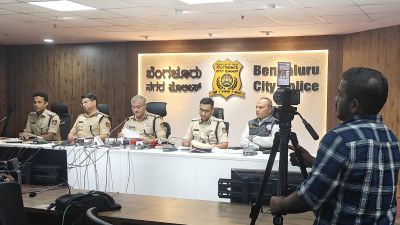I saw the news today, oh boy
As general elections beckon us once again to the ballot box, current affairs of the political kind, on the idiot box, assume additional imp...

As general elections beckon us once again to the ballot box, current affairs of the political kind, on the idiot box, assume additional importance. In the last elections, television played a small but increasingly significant role in acquainting viewers/voters with their politicians visages and views. So what, if any, guidelines, might the Election Commission issue? In 1996, rival TV channels in Tamil Nadu, affiliated to competing political parties (Sun to DMK, JJ TV to Jayalalitha) were converted into electoral platforms for their respective groups. With more TV channels broadcasting many more news bulletins and current affairs shows, the influence of TV — in the time of political uncertainty, when a small swing this way or that could make all the difference between victory and defeat — is likely to increase. In fact, this could be our first, full-fledged TV election with telegenic talents triumphing over substance (!?).
Direct uplinking from India would have helped by facilitating more up-to- date/live coverage. You will appreciate its importance if we look at Janta Ki Adalat (STAR Plus) and Aap Ki Adalat (ZEE). Last Sunday, as the central government hung in the balance, they fielded Kanshi Ram and Arif Baig, neither directly involved in or responsible for the imbroglio. Or take Special Session (STAR Plus), Karan Thapar’s latest offering: he was discussing the Jain Report that same weekend, with Shrikant Jena, Arjun Singh and Pramod Mahajan. Which by itself and Thapar’s habit of trying to hammer politicians to the cross, was a good thing. Except that it was the right topic at the wrong time. And that’s because the programme, like the earlier two, had to be recorded in advance.
Getting the choice just right, or indeed, what is the right choice, baby, applies equally to daily news. Look at the top three stories on four major news bulletins, Tuesday, 2 December 1997:
DD News (9 p.m.): Bihar Massacre, Political situation in the country, Leghari resigns as PresidentSTAR News (9 p.m.): Bihar Massacre, Leghari resigns as President, Political situation in the countryAaj Tak (10 p.m.): Political situation in the country, Leghari resigns as President, Bihar MassacreZee News (10.30 p.m.): General Kalkat speaks out on LTTE and India, Leghari resigns as President, T.N. Seshan on Rajiv Gandhi and security lapses.
Notice how each one had a different permutation. Inexplicable, because news is news until new events overtake old ones. The fact that someone else might have already broadcast it, is incidental. Though it might help explain Zee’s priorities. Presuming that by 10.30 p.m., viewers would have watched earlier bulletins, it went for exclusive interviews of another kind for its USP. And while the three private bulletins chose Leghari as second item, DD1 placed it third. This could be because its constituency is the all-India viewer, who presumably is more concerned with what is happening on the map of India.
Aaj Tak’s preferences are a little more baffling: by either criterion of newsworthiness or Indianness, the Bihar massacre was the most compelling news item. If news is first an actual event, then the killing of 61 people deserves higher pegging than politicking, which, on the day, didn’t result in anything concrete.
Anant (DD1 & DD2), a film on AIDS was a romantic attempt at demystification. Each of four AIDS patients — a drug-addicted film star, a prostitute, a mother and daughter — archetypal of different ways of the Syndrome may be contracted — describe their predicament. Their shared experience unites them and they run away from the hospital to find a h(e)aven in an ashram (how many patients can do that?). Someone must die because the scenery is simply too pretty. It has to be the little girl, leaving eyes on the screen and in homes across the country, awash with tears.
In order to lighten the burden of the message, director Raman Kumar, introduces songs at significant moments. And he holds out hope in the way the characters go from the darkness of the hospital to the open spaces of the ashram; in the manner Kanwaljeet, as the cine-star, goes from break-up to reconciliation with his father and even in the faint romantic stirrings between him and the tortured mother (Deepti Naval). Seema Biswas is in a cameo as the happy-go-lucky prostitute (!) whose childlike qualities draw the little girl to her. Positive. Smarmy. Sweet. A bowl full of sugar to help the medicine go down.



- 01
- 02
- 03
- 04
- 05




























